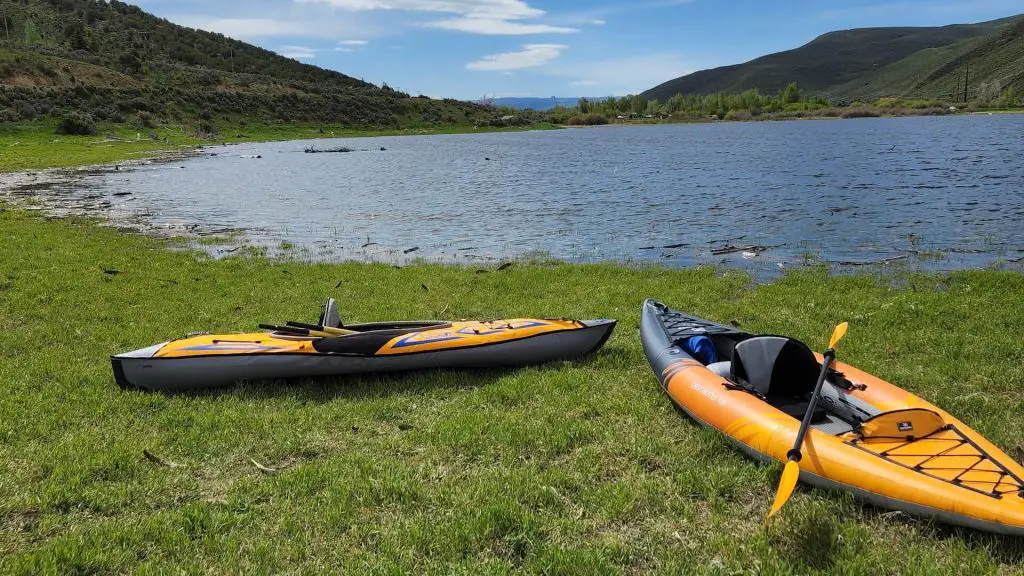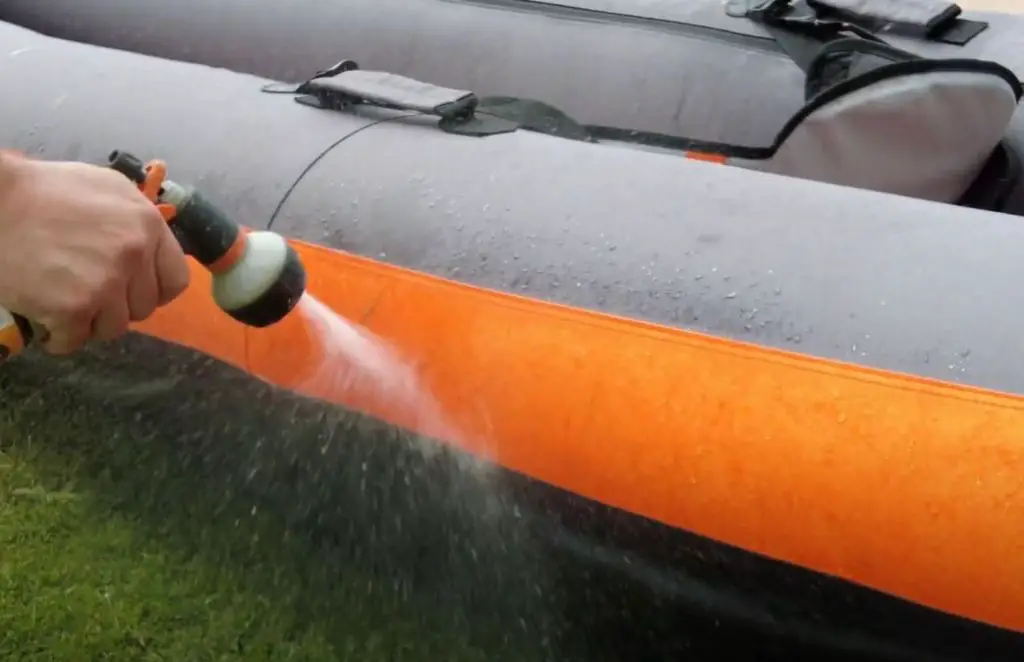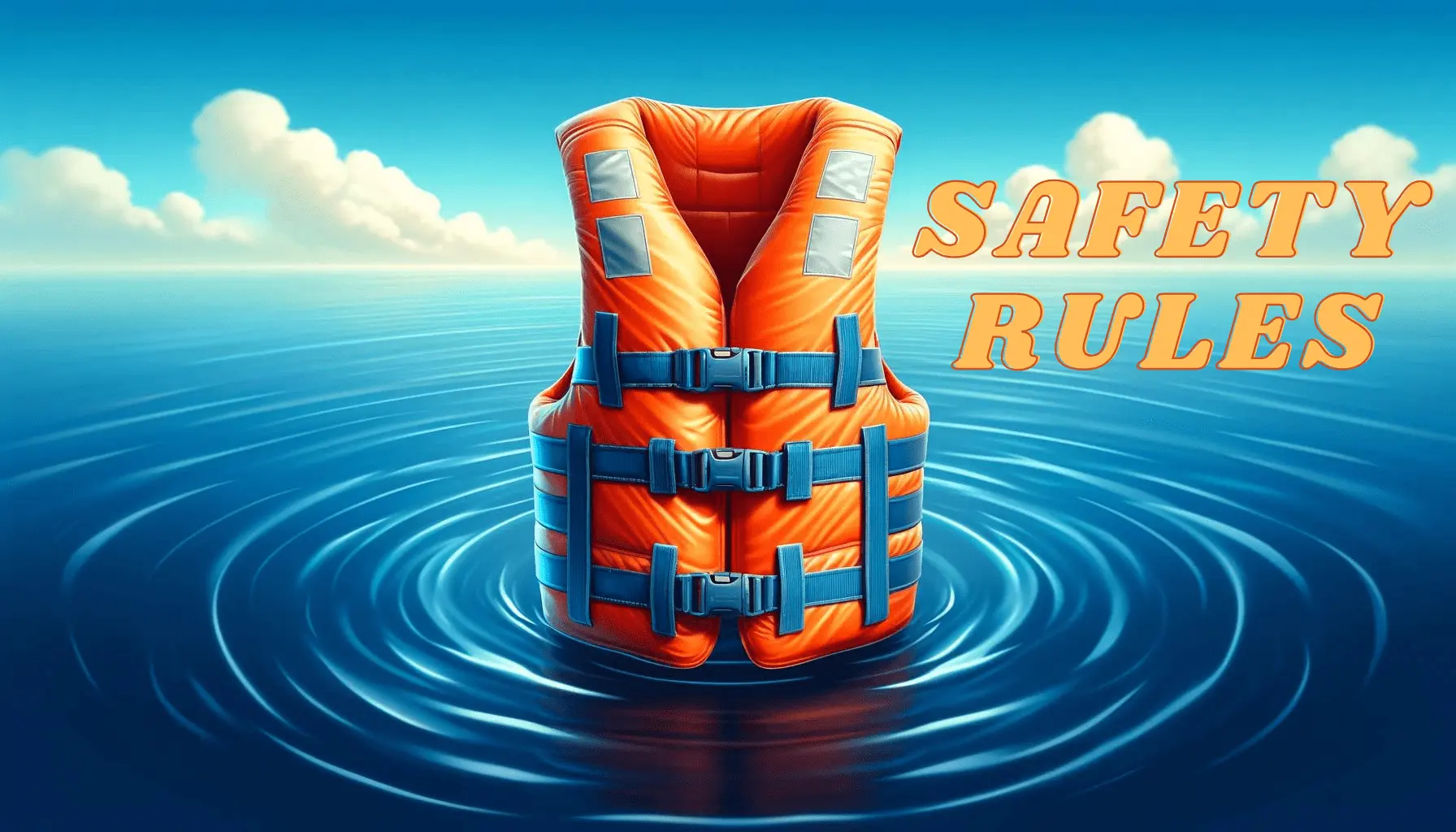One of the great things about inflatable kayaks is that they are catching up to “hard shell” kayaks in terms of performance and durability.
Also, they can be easier to store, especially when they can be folded in a bag and zipped up.
Inflatable kayaks give us better portability and storability and have become a popular first step for beginner kayakers. Advanced paddlers also like to have them as an option, as inflatable kayaks can be versatile.
However, proper storage is critical for ensuring the longevity and durability of your inflatable kayak. So we will learn the tips for how to store an inflatable kayak and keep it in prime condition.
In this article, I will provide a comprehensive guide on how to store an inflatable kayak, covering everything from cleaning and deflating to maintenance and care.

Steps On How To Store An Inflatable Kayak
There are two major considerations when it comes to storing an inflatable kayak.
You can store your “soft shell” kayak inflated or deflated. Below we will find which option is better for you based on space, frequency of use, commitment to cleaning, etc.
Let’s talk about the steps.
- First clean your kayak thoroughly before you store it.
- Dry your kayak completely.
- Deflate your kayak and pack your kayak in the storage bag.
- Store your kayak in the right place.
Clean Your Kayak Before You Store It

It is important to know how to clean an inflatable kayak. The cleaning process starts immediately after using the kayak. Before taking your kayak home, take a clean, dry towel and wipe it down. Clean off any sand or other dirt from the kayak, so you are ready to transport it back home.
You should partially deflate the kayak, to the point where you can transport it in your vehicle without damage.
Now, at home, you’ll need to inflate your kayak to a firm enough level that there are no hidden parts to clean.
Use a mild soap and water mix to get the dirt off your kayak. If there are tougher stains, you can use a cleaning fluid made specifically for the material of inflatable kayaks.
After you have washed your kayak, remember to rinse it thoroughly with fresh water, especially if you have been in salt water, as the salt can eat into the fabric over time.
And remember to rinse any dirt from the valves because they are the weakest point on the kayak.
Dry The Kayak
When you have washed and rinsed off your kayak, it needs drying. You can dry your kayak in the sun, but you must be very careful as the sun can damage the kayak.
You can air-dry it and use a fan to speed it up. But be careful with the temperature, you can damage the kayak if the air is very hot.
And the easiest way to dry your kayak is simply to take a dry clean towel, wipe it down well and then leave it out in the air for a while.
If you intend to store your kayak deflated, a storage bag can keep your kayak dry, which will prevent mold and mildew from growing with its breathable mesh.
Don’t use any unapproved solvents so as not to damage the fabric of the kayak.
Deflate Your Kayak And Pack Your Kayak In The Storage Bag
If you do decide to store your kayak deflated, the best way to deflate it is to use a pump that can also deflate.
If you use this pump, it will be much easier to get rid of all the air that is inside. In sequence, you won’t have any trouble folding it up, and it will easily fit in a bag.
If you don’t know how to fold a kayak properly, watch the video below, it will help you a lot.
Once you’ve folded your inflatable kayak, place it in a bag, and it’s ready for storage.
And the last step in figuring out how to store an inflatable kayak is to find a suitable place.
Use The Right Place
It’s important to keep the kayak and its surroundings dry. Damp materials can attract insects or rodents, which will destroy the fabric of the boat and ruin the integrity of the kayak.
Furthermore, avoid the heat, cold, and direct sunlight. Essentially, you need a dry, cool, and dark place protected from the sun’s UV rays. Places like the garage, closet, or basement are very suitable.
Also, when storing an inflated kayak, keep in mind that if the space gets too hot, the air inside the kayak’s chambers will expand and over-inflate the kayak.
This is bad and can cause warping and permanent damage to the fabric of the kayak. Cooler air will do the opposite; therefore, it is important to control the air temperature to avoid fluctuations.
Mildew can form, especially if the area where you store it is not dry enough. To ensure the kayak’s dryness, you can use small bags of desiccant. Desiccant absorbs moisture from its surroundings and keeps them dry.
That’s it, now you know how to properly store an inflatable kayak.
Is It Better To Store The Kayak Inflated Or Deflated?
You have two major decisions when it comes to how you store your inflatable kayak, and they are to store it deflated or inflated. And there are a few considerations that will help you determine which is best for you.
Let’s get into the specifics of storing a kayak, inflated or deflated.
Storing The Inflated Kayak
Storing your kayak inflated is not the best solution, but there are reasons and benefits to keeping it inflated. For example, when camping, you can have frequent kayak trips and want to save time.
By doing this, you will avoid inflating and deflating it repeatedly within a short time, which can cause wear and tear on seams, causing the kayak to fray and burst.
If you are going to store the kayak inflated, I recommend reading a few tips below on how to store an inflatable kayak.
The most important thing to remember is to store your inflatable kayak in a cool and dry place. If you store your kayak where the sun hits it, it can get warped and damaged.
Also, avoid hanging your inflatable kayak on the wall or even on brackets. As these can cause warping in the fabric of the kayak, remember that the kayak is not at full pressure and will bend in all positions. It’s best to just store it horizontally, as if it were on water.
You would want to keep your kayak clean, especially if there is salt water. Then deflate your kayak only a tiny bit, just to make sure there’s not too much pressure. Avoid stacking things (no matter how light they are) on the kayak, as it will damage an inflatable kayak just like you would with a “hard shell.”
Storing The Kayak Deflated
The great thing about deflating your kayak for storage is that you can transport a kayak in the bag whenever and wherever you need it.
Additionally, a deflated kayak in a bag takes up less space than a full-sized kayak. This is the advantage of an inflatable kayak over a “hard shell” kayak.
Don’t forget to cover all the valves with their covers. If you lose the valve covers, get new ones. As I said earlier, the valves are the real weak point of the inflatable kayak; you need to make sure dust does not build up there.
Some inflatable kayaks have terrible bags, and you can have trouble putting them back in the bag. Not to worry, you can buy a dry bag that will suit your needs.
With a third-party carry bag, you can store almost all the gear. Things like your foot pump, skeg, pedals, etc.
However, I advise that you keep that gear in separate compartments from the kayak and other inflatables, like the seats.
Make sure all the chambers are correctly deflated. This is to avoid punctures when the material folds and creases form.
Summary
We have learned that inflatable kayaks are brilliant when it comes to storage, and they are not too far behind in terms of performance compared to “hard shell” kayaks.
Although inflatable kayaks are becoming increasingly durable, you still need to store them properly and in a suitable place.
Knowing this will not only increase the value of your investment but will also save you money on adventures.



